Table of Contents
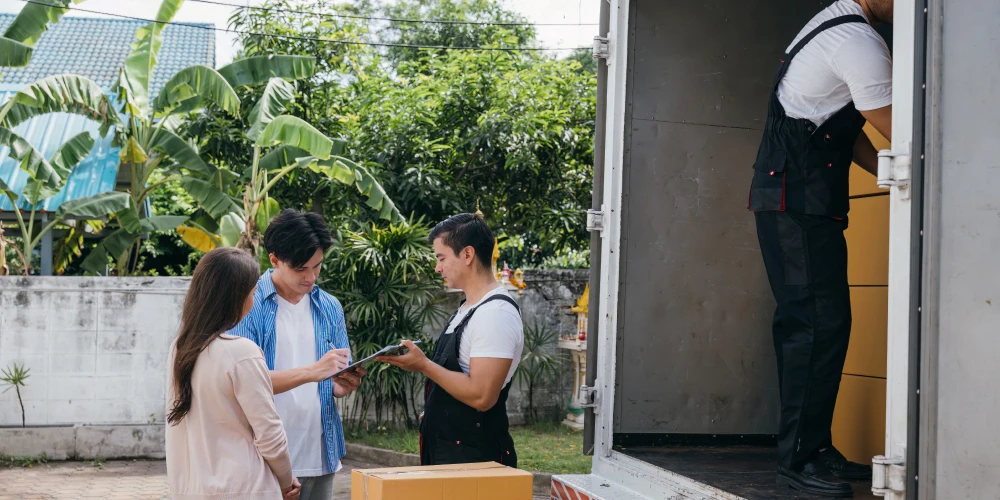
Within a highly competitive market, grocery delivery businesses strive to establish a lasting rapport with customers through impeccable service. Enterprises employ advanced management platforms to navigate the intricate logistics of grocery delivery, ensuring that each customer receives their order accurately and promptly.
These platforms provide a robust infrastructure that optimizes driver routes, diminishing delivery times and amplifying efficiency. The integration of real-time tracking is a cornerstone in these systems, offering customers peace of mind through transparent visibility of their orders from the store to the doorstep. By leveraging cutting-edge technology, grocery delivery services can promise an elevated experience that secures customer loyalty and distinguishes them from industry contenders.
Optimizing Route Planning for Delivery Efficiency
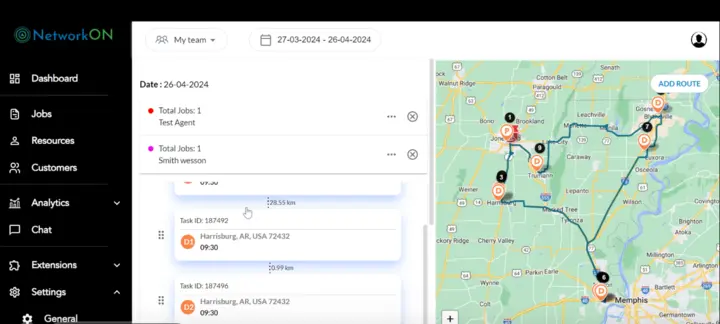
Efficient route planning defines the success of delivery operations within the grocery segment. When drivers access dynamic routing capabilities, they navigate with greater precision, sidestep traffic hurdles, and deliver orders on time, fostering customer satisfaction. A primary feature of any adept grocery delivery management platform is the inclusion of sophisticated routing algorithms. These are designed to calculate the most efficient path through multiple stops, considering factors such as order priorities, delivery windows, and road patterns.
The Importance of Dynamic Routing for Drivers
Dynamic routing is more than just a mapped course; it’s a constantly evolving solution that adapts to real-time variables. Drivers leveraging this tech face fewer unexpected delays. They can react swiftly to changes, such as order cancellations or the addition of last-minute deliveries. The outcome is a demonstrable increase in the number of deliveries a driver can complete within a given timeframe.
Software Solutions for Effective Scheduling
Comprehensive scheduling tools embedded within a grocery delivery management platform enable meticulous planning. These solutions consider historical traffic data and predictive analyses to determine optimal departure times and delivery sequences. Consequently, businesses schedule deliveries with an accuracy that curtails idle time for drivers and elevates overall operational throughput.
Minimizing Delays and Maximizing Delivery Capacity
A synergy between dynamic routing and advanced software solutions substantially reduces delays. Minimizing time spent on the road ensures that resources are utilized to their utmost potential, maximizing delivery capacity. Moreover, this efficiency translates into serving an expanding customer base without proportionately increasing the fleet size or incurring additional overhead costs.
Reflecting upon the behavioral patterns of the modern consumer, one can see that speed and reliability often outweigh the cost. A grocery delivery management platform that underscores route optimization manifests in smoother operations and shines as a compelling value proposition to the end user.
Mastering Inventory Management for Seamless Service
Effective inventory management is the backbone of a grocery delivery management platform, ensuring that products are consistently available for customer orders. Stock integration must occur in real-time to maintain the delicate balance between supply and demand. This synchronization keeps shelves adequately stocked and customers satisfied, as they receive what they order without facing unexpected out-of-stock notifications.
Ensuring constant stock integration
A grocery delivery management platform leverages technology to merge online and physical inventory data, providing a unified view of stock levels. Such integration allows for adjustments to be made promptly as sales occur, preventing the discordance that can lead to either stockouts or overstock.
Minimizing waste with accurate forecasting
Forecasting tools within the platform analyze historical data to accurately predict future demand, enabling grocery businesses to order optimal inventory levels. This effectively manages product shelf life, reducing spoilage and waste while maximizing turnover.
The impact of a synchronized system for both customers and business operations
A fully integrated inventory system streamlines the customer’s shopping experience and enhances business operations. Inventory accuracy eliminates the risk of selling items not in stock, thereby reducing errors and ensuring customer satisfaction. For the business, this synchronization means increased efficiency, reduced costs related to excess inventory, and the ability to make informed purchasing decisions.
Communication Tools for Enhanced Customer Service
Proactive customer support features in a grocery delivery management platform transform the delivery experience. These features enable support teams to anticipate customer needs and address issues without the customer reaching out first. A well-integrated communication channel is non-negotiable for this system to be effective. Customers receive assistance precisely when needed, reinforcing their trust in the service.

Real-time notifications and updates keep customers informed throughout the delivery process. Whether it’s a confirmation of the order receipt, a status update on order preparation, or a delivery vehicle’s location, these notifications ensure transparency. The immediate effect is a reduction in customer anxiety related to the whereabouts and status of their purchase. Furthermore, this lets customers plan their day better, knowing when to expect delivery.
Delivery platforms that seamlessly integrate customer service foster loyalty. Tactful integration means customers feel heard and valued from the first interaction to the post-delivery follow-up. For instance, post-delivery surveys can gauge satisfaction and solicit feedback. Additionally, if necessary, quick resolution of complaints or refunds becomes smoother when all channels are interconnected. By creating this holistic service environment, repeat patronage is more likely.
- Dedicated chat support ensures immediate assistance without leaving the platform.
- Email and phone channels provide alternative support methods, catering to personal customer preferences.
- Automated helpdesks can resolve common queries swiftly, freeing up human support for more complex issues.
Leveraging Data Analytics for Performance Insight
A grocery delivery management platform uses data analytics to transform vast amounts of raw data into actionable insights, which drive operational improvements across the supply chain.
Harnessing Data for Operational Improvements
A sophisticated analytics engine dissects customer behavior, purchase patterns, and delivery times to identify areas ripe for enhancement. By analyzing performance metrics such as order fulfillment speed and accuracy, delivery times, and customer feedback, platforms offer tangible solutions to bolster efficiency and customer satisfaction.
Predictive Analysis for Demand and Driver Response
Predictive analysis tools within the platform process historical data to forecast future demand, enabling businesses to adjust inventory and staffing levels proactively. Similarly, delivery demand spikes are anticipated, ensuring driver allocation is optimized to meet the surge, minimizing delays, and reducing customer wait times.
Embracing Contactless Delivery Amidst New Norms
Grocery delivery management platforms have adapted seamlessly to social distancing requirements, ensuring that customer and employee health and safety are upheld. These platforms meet the escalating demand for safer delivery methods by integrating no-contact delivery options. This integration has required robust back-end support to coordinate between the shopper’s preferences and delivery personnel instructions.
Meeting Health and Safety Standards
Adopting contactless delivery protocols aligns with health guidelines and reduces the risk of virus transmission. Delivery personnel follow procedures that minimize physical interaction by placing orders at specified locations and notifying customers once their delivery is complete. This protocol reassures customers that businesses prioritize their well-being.
Implementing and Managing No-Contact Delivery Options
With the configuration of app features to support no-contact delivery, consumers can now opt for this preference during checkout. Drivers are notified of such preferences and receive instructions on where to leave orders. Furthermore, grocery delivery management platforms integrate photographic verification of deliveries to maintain accountability and provide proof of service without physical contact.
Scaling Operations with a Powerful Management Platform
As businesses experience growth, scaling services to keep pace with demand becomes essential. A robust management platform is pivotal in responding to this expansion. This platform facilitates an increase in the volume of orders and streamlines complex logistical challenges.
The Scalability of Services to Match Business Growth
By transitioning to automated management systems, grocery delivery enterprises effortlessly scale operations. Automation replaces labor-intensive processes, thus enabling the seamless assimilation of increased orders. This suite supports varying business sizes, ensuring that expanding a customer base or increasing product variety is smooth and efficient.
Features that Support Expanding Delivery Requirements
- A management platform comes equipped with advanced scheduling tools, allowing for capacity planning and resource allocation that can adapt to fluctuating demand patterns.
- Seamless integration with existing systems ensures continuity and reduces the potential for service interruptions during growth phases.
- Multi-location management features facilitate centralized control over widespread geographical operations.
Transitioning from Manual to Automated Management Systems
The shift from manual processes to an automated management platform enhances precision and reduces the margin of error. Instant updates across the network ensure that inventory levels match demand, and real-time data empowers decision-making. Integrating AI and machine learning algorithms further refines demand forecasting, contributing to a proactive rather than reactive approach to business scaling.
Pricing Strategies and Cost Search Engine Optimization
Deploying a grocery delivery management platform necessitates a nuanced understanding of service costs. Businesses must analyze their operating expenses, including labor, fuel, maintenance, and packaging, to ensure a competitive edge without compromising profitability. Knowledge of each cost factor enables companies to price their services effectively.
Understanding and Controlling Delivery Service Costs
Controlling delivery service costs starts with identifying the variables affecting the bottom line. Analyzing data from past deliveries helps pinpoint areas for cost reduction; for example, software can predict fuel consumption patterns, leading to more economical vehicle use. Additionally, exploring bulk purchasing for packaging supplies or investing in energy-efficient transportation can yield significant cost savings over time.
Pricing Models That Work for Business and Customers
Selecting the right pricing model aligns business goals with customer satisfaction. Whether opting for a flat-rate fee, tiered pricing based on distance, or dynamic pricing that reflects demand variability, transparency in how these fees are calculated fosters trust between the service and its users.
Examining competitors’ pricing also provides insights, as charging too far above or below the market rate can deter potential customers. The goal is to balance affordability for the consumer with sustainable margins for the business, a feat accomplished through diligent market research and ongoing pricing optimization.
Discounts, Offers, and Loyalty Programs Management
Structured discounts and offers increase order volume and customer loyalty, yet they require careful management to prevent erosion of the profit margin. Successful loyalty programs reward repeat customers, encouraging continued business without substantially reducing the revenue per order. Integrating these strategies into a grocery delivery management platform seamlessly tracks participation and redemptions, automating what would otherwise be a resource-intensive process.
- Offer targeted discounts to move excess inventory, thus minimizing waste while promoting sales.
- Create time-sensitive offers during off-peak hours to help level demand fluctuations.
- Employ a points-based loyalty system to incentivize repeat business without direct discounting.
Grocery delivery services can establish a strong market position through precise costing, diverse pricing models, and strategic promotions. Comprehensive management platforms support these endeavors by providing the necessary tools for analysis and implementation.
Mobile App Interface Impact on User Experience
An intuitive and responsive design in grocery delivery apps simplifies ordering groceries, influences customer satisfaction, and fosters loyalty. A seamless user interface (UI) allows shoppers to browse products effortlessly, add items to their cart, and complete their purchases without confusion or unnecessary steps. A well-structured mobile app UI helps users save time, minimizes errors, and enhances their shopping experience.
Deploying Intuitive and Responsive Design for Grocery Apps
Responsiveness in mobile app design ensures that a grocery delivery platform performs efficiently across various devices and screen sizes. By adjusting visual elements and navigation to the user’s device, the app promotes accessibility and ease of use. Intuitive design elements guide users through their shopping journey, from searching for specific items to checking out without explicit instructions.
Enhancing the User Journey from Order to Delivery
Designers can identify and eliminate potential friction points by mapping the user’s journey from order placement to delivery. This process involves the strategic layout of buttons for easy navigation, simplifying the checkout process, and providing clear paths to essential features like order tracking. This thoughtfully crafted pathway ensures users have a satisfactory experience that encourages repeat platform use.
Customers are more likely to continue using a grocery delivery app that regularly incorporates feedback into its software updates. A robust feedback mechanism within the app, allowing users to report issues and make suggestions, serves to refine and tailor the platform to meet customer needs better. Regular app updates informed by this continuous feedback loop demonstrate a commitment to improvement and typically result in a more polished and user-centric product over time.
Streamlining Payments for Smooth Transactions
A grocery delivery management platform must facilitate a seamless checkout process. This entails integrating payment solutions that cater to various preferences and ensure secure transactions. Ensuring users can choose their preferred payment method can significantly decrease the likelihood of cart abandonment.
Payment Solution Integration
Fusing intuitive payment gateways into a grocery delivery management platform can simplify checkout. By delivering a trouble-free payment experience, businesses can expect enhanced customer retention. Platforms benefit from the synergy with trusted payment processors, safeguarding transactional integrity and boosting shopper confidence.
Security and Convenience in Transactions
Transactions combine robust security measures with ease of access. Secure Socket Layer (SSL) technology and compliance with the Payment Card Industry Data Security Standard (PCI DSS) are non-negotiable features that protect the consumer and the provider. As trust in payment security fortifies, customers engage more readily and recurrently.
Reducing Friction and Abandonment
Diverse payment options, including credit/debit cards, mobile wallets, and online banking, help cater to individual preferences and can help decrease checkout friction. Payment flexibility contributes to a reduction in transactional resistance. Each additional payment method broadens potential customer bases, accommodating an array of financial habits and requirements.
Navigating the Regulatory Landscape
Understanding and adhering to the regulatory framework is compulsory for grocery delivery management platforms. Regulations are continually evolving, demanding that platforms stay informed and agile. Non-compliance may result in penalties or operational disruptions.
Compliance Challenges in the Grocery Delivery Industry
Grocery delivery services encounter various compliance challenges. These may include zoning laws, food safety regulations, licensing requirements, and labor laws. Each jurisdiction may have unique rules, which can complicate operations for platforms serving multiple areas. Managers must ensure they are familiar with each locale’s regulatory environment.
Data Protection and Privacy Laws
Privacy laws, such as the General Data Protection Regulation (GDPR) in the EU and the California Consumer Privacy Act (CCPA) in the United States, set standards for handling personal information. Platforms must have systems to securely manage customer data and comply with these laws, which means implementing robust cybersecurity measures and transparent privacy policies.
Keeping Platforms Up-to-Date with Regulatory Changes
Regulatory changes are a constant in the digital world, often triggered by technological advancements or shifts in public policy. Platforms must have processes to monitor and quickly respond to new regulations. This can involve regular audits, updating terms of service, and modifying data handling practices. Staying ahead of these changes reduces risk and can provide a competitive advantage.
- Ample research into local and international laws ensures a comprehensive compliance strategy.
- Anchoring platform operations in current legal standards solidifies consumer trust and business legitimacy.
- Diligent record-keeping and documentation are indispensable for demonstrating compliance during audits.
Prioritizing Sustainability in Deliveries
A grocery delivery management platform advances sustainability by integrating green practices throughout the delivery process. Reduction in carbon emissions becomes achievable through route optimization algorithms that calculate the most efficient paths, thus saving fuel. Additionally, dispatch algorithms can bundle deliveries in proximity, lessening the environmental impact.
Another element of green delivery practices includes the use of eco-friendly packaging solutions. Platforms encourage the adoption of biodegradable or recyclable materials to minimize waste. By transitioning to such alternatives, businesses contribute to reduced landfill and ocean plastic pollution.
The synergy between businesses and consumers is pivotal in achieving sustainability goals. Platforms allow customers to choose greener delivery options, such as selecting low-impact delivery windows or opting for package-less delivery where possible. As consumer demand for sustainability grows, businesses that align their operations with environmental values foster loyalty and incentivize societal change toward greater ecological responsibility.
The Dynamics of Partnering in the Grocery Ecosystem
Partnerships within the grocery delivery sector transform market penetration strategies and operational efficiency. Collaboration occurs across a diverse mix of local retailers and chain supermarkets, each with distinct advantages and obstacles. Local retailers deliver unique, often artisanal, products with a personalized touch, fostering strong community ties. Conversely, chain supermarkets leverage vast networks and bulk purchasing power, dominating price competitiveness and variety.
Forming strategic partnerships can extend a grocery delivery service’s reach. By aligning with complementary services and product providers, businesses gain access to new customer segments and geographies. For instance, partnerships with local farmers for fresh produce or with niche food companies for specialty items can enhance a platform’s appeal.
A robust grocery delivery management platform eloquently orchestrates these partnerships. A collective framework enables seamless sharing and management of crucial data such as inventory levels, delivery schedules, and consumer preferences. This synergy ensures that all members of the ecosystem benefit from increased efficiency and customer satisfaction. Retailers connected via such a platform can respond strategically to market demands, streamlining supply chains and optimizing delivery routes.
- Local retailers often find value in a management platform’s ability to streamline complex logistics, which helps them compete with larger chains.
- Chain supermarkets use management platforms’ analytics capabilities to hyper-target marketing efforts and maximize profit margins across a vast network of outlets.
Pioneering a collaborative network positions a grocery delivery service as a facilitator of community and convenience, integrating diverse offerings into a unified, user-friendly shopping experience. The shared digital infrastructure fosters a high-functioning, synergistic ecosystem that supports individual players’ growth and enhances the grocery industry’s robustness as a whole.
A.I. and Machine Learning: The Predictive Edge
Incorporating artificial intelligence and machine learning into grocery delivery management platforms has revolutionized how businesses anticipate demand and manage inventories. Advanced algorithms analyze vast amounts of data, translating into more accurate predictions for consumer behavior. Supply chain efficiencies emerge as these technologies sift through complexities to optimize delivery schedules and stock levels.
Anticipating demand is no longer a matter of intuition but a data-driven process. Machine learning algorithms detect patterns and predict future sales with remarkable accuracy. This data-centric approach enables stores to prepare for fluctuations in demand proactively.
Tailoring stock levels and delivery schedules to meet this anticipated demand ensures that products are available when and where they’re needed, minimizing waste and increasing customer satisfaction.
Machine learning also plays a critical role in enhancing the entire supply chain. AI-driven insights afford deliverance from traditional logistics models, leading to innovative practices that streamline the journey from warehouse to doorstep.
With these sophisticated tools, grocery delivery services can maintain a competitive edge, adapting swiftly to the changing market dynamics and consumer preferences. The predictive capabilities of AI and machine learning pave the way for smarter, more reactive supply chains that can anticipate and shape future market trends.
Peering into the Future of Grocery Delivery Services
Advances in innovation and technology continually redefine the grocery delivery landscape. Emerging technologies promise enhancements in service delivery, while a robust and adaptable platform ensures readiness for future shifts in the market.
Innovation and Technology Trends Shaping the Future
New technology has played a leading role in the evolution of grocery delivery services. Autonomous delivery vehicles, from drones to self-driving cars, begin to navigate the skies and streets, promising reduced delivery times and operational costs. Blockchain technology offers unparalleled transparency and efficiency in supply chain management. Robotics and advanced automation in warehouses streamline the sorting and packing processes, resulting in faster fulfillment.
The Potential of Emerging Technologies in Improving Service Delivery
Integrating augmented reality (AR) and virtual reality (VR) elevates the customer experience by providing immersive shopping experiences. Personalization engines, powered by big data analytics, go further by tailoring product recommendations with precision, enhancing customer satisfaction and loyalty. The IoT (Internet of Things) connects devices across the delivery chain for real-time monitoring and optimization of resources.
Preparing for the Future with a Robust and Adaptable Platform
- A future-focused grocery delivery management platform equips businesses to handle complex datasets, offering predictive insights that inform decision-making.
- Flexibility in technology architecture supports integrating emerging technologies as they become market-ready.
- Investment in cybersecurity measures safeguards against the increasing risks associated with technological advancements.
With these technological advancements, delivery services will experience unparalleled efficiency and customer connectivity. Companies anticipating and adapting to these trends will position themselves at the forefront of the industry.
Key Takeaways:
- Advanced Route Optimization and Real-Time Tracking: Grocery delivery management platforms significantly enhance delivery efficiency by utilizing sophisticated routing algorithms and real-time tracking. This ensures timely and accurate deliveries that bolster customer satisfaction.
- Dynamic Inventory Management: Effective inventory management, including real-time stock integration and accurate demand forecasting, prevents stockouts and overstock, reduces waste, and enhances the customer shopping experience.
- Enhanced Customer Communication: Integrated communication tools provide proactive customer support, real-time notifications, and seamless interaction through multiple channels, fostering customer trust and loyalty.
- Leveraging AI and Data Analytics: AI and machine learning enable predictive analysis for demand forecasting and operational improvements, driving efficiencies across the supply chain and ensuring businesses can meet market demands proactively.
- Scalability and Future-Readiness: A robust grocery delivery management platform supports scalability, allowing businesses to handle increased order volumes and integrate emerging technologies like autonomous delivery vehicles and IoT, positioning them for future growth and innovation.
Conclusion: Transform Your Grocery Delivery Service Today
A grocery delivery management platform serves as the linchpin in modernizing delivery services. By facilitating real-time order tracking, optimizing route planning, and mastering inventory management, these systems create seamless service experiences. With the incorporation of analytics and AI, delivery operations become more than routine; they evolve into data-driven, predictive operations capable of outpacing competition and anticipating customer demands.
Don’t let static operations hinder growth. Leverage a comprehensive grocery delivery management platform to overcome market challenges, meet evolving consumer expectations, and drive scalable growth. Those ready to transition to cost-effective, environmentally conscious, and efficiently managed operations will find a robust software platform indispensable.
Elevate your service with a platform that streamlines payments, navigates the tightening regulatory landscape, and enables a forward-looking approach to grocery delivery. Offer customers the convenience, speed, and quality they expect. Grasp the competitive edge with a management platform integrating a mobile app interface that delights users and employs contactless delivery methods favored in today’s marketplace.
Transform your grocery delivery service with NetworkON’s advanced management platform. Enhance efficiency with real-time tracking, AI-driven operations, and seamless payment solutions. Schedule a personalized demo today to see how we can elevate your business and exceed customer expectations. Contact us now to unlock your growth potential.
Frequently Asked Questions
How does a grocery delivery management platform optimize delivery routes?
A grocery delivery management platform uses advanced routing algorithms to calculate the most efficient paths for delivery drivers. These algorithms consider traffic conditions, delivery priorities, and time windows, enabling drivers to avoid delays and promptly complete deliveries.
What benefits does real-time inventory integration offer?
Real-time inventory integration ensures that stock levels are constantly updated across online and physical stores. This synchronization prevents stockouts and overstock situations, reduces waste, and enhances customer satisfaction by accurately fulfilling orders.
How does AI improve the efficiency of grocery delivery services?
AI and machine learning analyze vast amounts of data to predict future demand, optimize inventory levels, and streamline delivery schedules. This predictive capability helps businesses anticipate market trends, adjust operations proactively, and ensure that products are available when and where they are needed.
What measures are in place to ensure data security and privacy?
Grocery delivery management platforms comply with data protection regulations such as GDPR and CCPA, employing robust cybersecurity measures like SSL technology and PCI DSS compliance. These measures ensure customer data is handled securely, maintaining trust and protecting against data breaches.
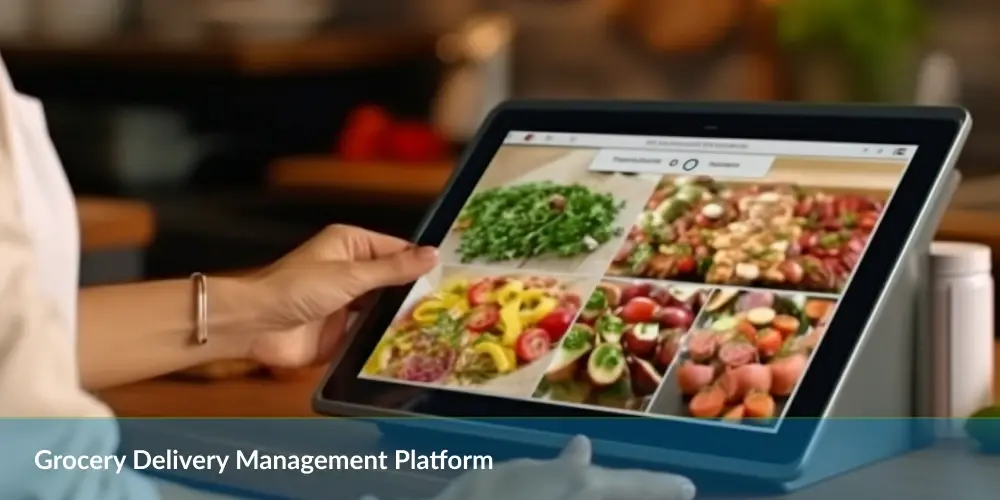

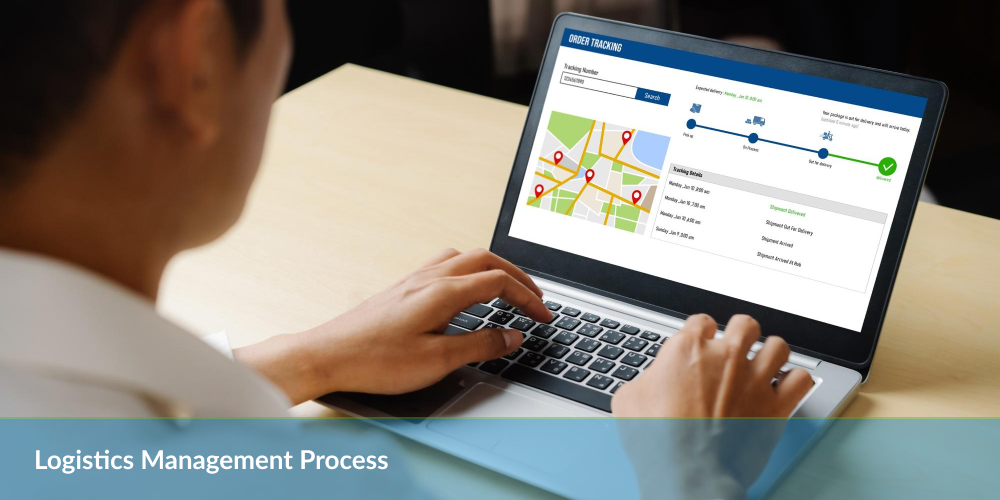
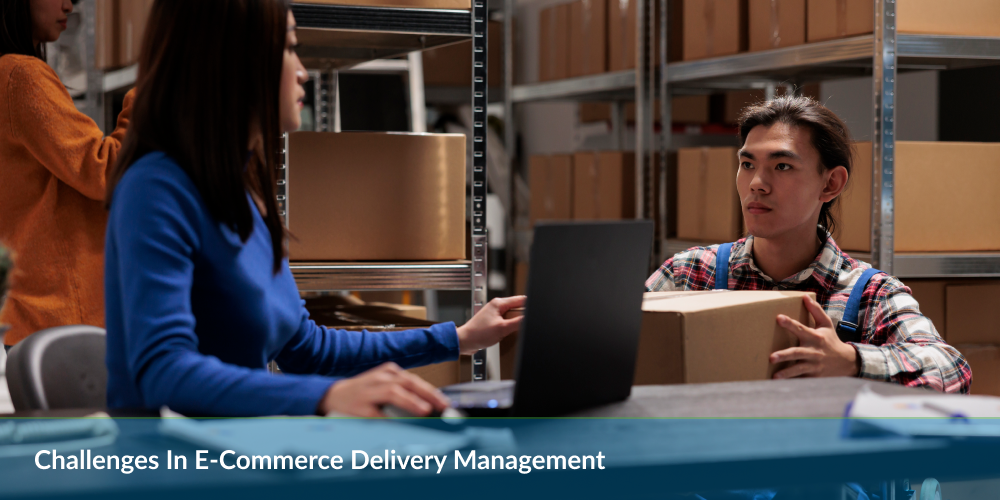
0 Conversations